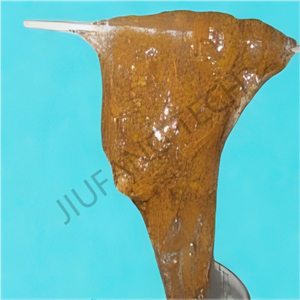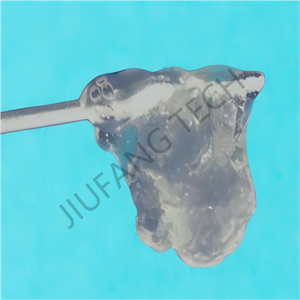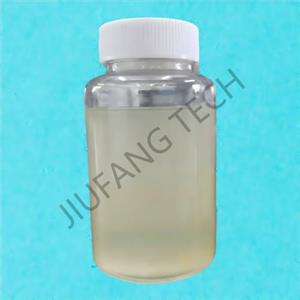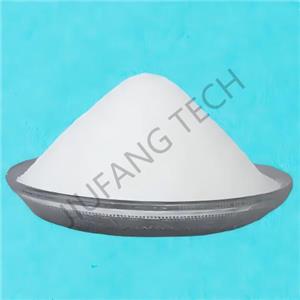A Comprehensive Guide to Polyacrylamide: The Amazing Secrets and Wide Applications of the "All-Industry Additive"
I. What is Polyacrylamide?
Polyacrylamide (PAM), chemically speaking, is a water-soluble linear polymer formed by the free radical-initiated polymerization of acrylamide (AM) monomers, with the molecular formula (C₃H₅NO)n. It appears as a hard glassy solid at room temperature, but in practical applications, we often encounter it in forms such as colloidal liquids, latexes, white powder, translucent beads, and flakes.
Polyacrylamide has two important structural parameters: molecular weight and ionic property. Based on molecular weight, it can be divided into low molecular weight, medium molecular weight, high molecular weight, and ultra-high molecular weight. According to ionic property, that is, the ionization characteristics in aqueous solution, it can be classified into non-ionic, anionic, cationic, and amphoteric ionic types. Different types of polyacrylamide exhibit distinct properties due to structural differences, thus adapting to various application scenarios.
II. Characteristics of Polyacrylamide
(I) Unique Physical Properties
Solubility: It can dissolve in water in any proportion, forming a uniform and transparent aqueous solution. This property makes it extremely convenient in many scenarios requiring mixing with water. However, after long-term storage, the viscosity of the solution will decrease due to the slow degradation of the polymer, especially when storage and transportation conditions are poor.
Viscosity: The viscosity of polyacrylamide aqueous solution is closely related to concentration; as the concentration increases, the viscosity rises accordingly. Moreover, at the same concentration, the viscosity of high molecular weight polyacrylamide solution is relatively higher. Meanwhile, the pH value of the solution also affects the viscosity. In high pH solutions, due to hydrolysis, carboxylate anions are generated in the molecules, and the molecular chains stretch due to electrostatic repulsion, thereby increasing the viscosity of the solution.
Flocculation: High molecular weight polyacrylamide has excellent flocculation performance. Its molecular chains can cleverly form "bridges" between adsorbed particles, connecting several or even dozens of particles together, promoting the rapid formation of flocs and greatly accelerating the sedimentation rate of particles. The charges carried on the molecular chains can exert electrostatic attraction on the particles, and the length of the molecules provides good adsorption performance and binding sites with hydrogen bonds. These factors work together to further optimize the flocculation effect.
(II) Rich Chemical Properties
Hydrolysis Reaction: Polyacrylamide can be converted into a polymer containing carboxyl groups through the hydrolysis of amide groups, and the product is called partially hydrolyzed polyacrylamide. In acidic conditions, although the hydrolysis reaction is enhanced by acid, the rate is much slower than that of alkaline hydrolysis and usually requires a higher temperature.
Hydroxymethylation Reaction: It can react with formaldehyde to form hydroxymethylated polyacrylamide. This reaction can proceed under both acidic and alkaline conditions, but the reaction rate is faster under alkaline conditions. In acidic conditions, since formaldehyde mostly exists in a chain form, the effective concentration decreases, resulting in a slower reaction rate.
Sulfomethylation Reaction: This reaction is carried out under alkaline conditions and has two feeding methods. One is that polyacrylamide reacts directly with sodium bisulfite and formaldehyde under alkaline conditions to generate anionic derivative - sulfomethylated polyacrylamide; the other is that sodium bisulfite is first added to the methylated polyacrylamide solution, and sulfomethylated polyacrylamide is obtained after the second reaction. This reaction is extremely sensitive to pH value. When the pH value is less than 10, the reaction is very slow at 70°C; when the pH value is greater than 10, the reaction rate increases significantly.
Aminomethylation Reaction: Also known as the Mannich reaction, polyacrylamide, dimethylamine, and formaldehyde can generate dimethylamine - N - methylpropenyl o-phenylenediamine polymer through this reaction. This is a common method for preparing cationic polyacrylamide, and the resulting product, due to the active group side chains on the molecular chain, can improve the clarification rate of wastewater when used as a flocculant.
Hofmann Degradation Reaction: Polyacrylamide can react with hypohalites such as sodium hypochlorite or sodium hypobromite under alkaline conditions to generate cationic polyvinylamine.
Crosslinking Reaction: Aqueous solution of polyacrylamide will form insoluble crosslinked polyacrylamide gel when heated under acidic conditions. In addition, it can also undergo crosslinking reactions with glyoxal, urea-formaldehyde resin, melamine resin, phenolic resin, etc. The aqueous solution of hydrolyzed polyacrylamide and acrylamide copolymer can also undergo crosslinking reactions with polynuclear hydroxyl bridged ions generated by high metal ions such as aluminum salts, chromium salts, zirconium salts, manganese salts, and titanium salts to form gels.
III. Preparation Methods of Polyacrylamide
(I) Aqueous Solution Polymerization
This is the oldest method for producing polyacrylamide, with the advantages of safe production and economy, and is an important production route for polyacrylamide. By changing reaction conditions such as initiator system, medium pH value, type and dosage of additives, solvent, and polymerization temperature, the influence on polymerization reaction characteristics and product properties can be explored. However, due to the use of water as a solvent, the impurity content in the system is low, the chain transfer constant of monomers in aqueous solution is low, and limited by process conditions, the solid content of polymerization products in aqueous solution is low, and imidization reaction is prone to occur to form gels, making it difficult to obtain high relative molecular weight polyacrylamide.
(II) Precipitation Polymerization
When the resulting polymer cannot dissolve in solvents such as acetone and ethanol, the polymer will continuously precipitate from the solution as the reaction proceeds, hence the name of this polymerization method. The polyacrylamide prepared by this method has a relatively high molecular weight and good uniformity.
(III) Dispersion Polymerization
Dispersion polymerization is a type of free radical polymerization, with kinetic behavior similar to bulk polymerization, and can be regarded as a special kind of precipitation polymerization. Its principle is to disperse monomers into water to form an aqueous solution of a certain concentration, and then add an initiator for polymerization. During the polymerization process, the prepolymerized monomers and initiator dissolve in the reaction medium to form a homogeneous system; the generated polymer precipitates because it is not easily soluble in the reaction medium, and the precipitated polymer agglomerates with each other, and under the action of a stabilizer, stably suspends in the reaction solution in the form of fine particles, forming a heterogeneous dispersion. This dispersion polymerization system has high solid content, low viscosity, and good shear stability.
IV. Application Fields of Polyacrylamide
(I) Water Treatment Field
Raw Water Treatment: In the process of raw water treatment, polyacrylamide is used in conjunction with activated carbon and other substances to coagulate and clarify suspended particles in domestic water. Compared with inorganic flocculants, the use of organic flocculant polyacrylamide can improve the water purification capacity by more than 20% even without modifying the sedimentation tank.
Wastewater Treatment: Polyacrylamide plays an important role in wastewater treatment. It can not only increase the reuse rate of water recycling but also be used as a sludge dewatering agent. Moreover, when used in combination with inorganic flocculants, it can significantly improve water quality and reduce the dosage of flocculants. At the same time, the flocs formed by polyacrylamide have high strength and good sedimentation performance, which can effectively improve the solid-liquid separation speed and facilitate sludge dewatering.
Industrial Water Treatment: In industrial water treatment, polyacrylamide is an important formula agent. Its use can greatly reduce the dosage of inorganic flocculants, avoid the deposition of inorganic substances on the surface of equipment, thereby slowing down the corrosion and scaling of equipment. It is reported that 37% of the global total output of polyacrylamide is used for wastewater treatment, and its importance in the field of water treatment is self-evident.
(II) Oil Extraction Field
Polyacrylamide is a versatile oilfield chemical treatment agent, widely used in many operations of oil extraction such as drilling, well cementing, completion, workover, fracturing, acidizing, water injection, water plugging and profile control, and tertiary oil recovery, especially in drilling, water plugging and profile control, and tertiary oil recovery. Its aqueous solution has high viscosity and excellent thickening, flocculation, and rheological adjustment effects. In the middle and later stages of oil extraction, to improve oil recovery, China mainly promotes polymer flooding and ASP (alkaline-surfactant-polymer) flooding technologies. By injecting polyacrylamide aqueous solution, the oil-water flow rate ratio can be improved, and the crude oil content in the produced fluid can be increased. Adding polyacrylamide in tertiary oil recovery can enhance the oil displacement capacity, prevent breakthrough of the oil layer, and thus improve the recovery rate of the oil reservoir. China's petroleum industry is the largest user of polyacrylamide.
(III) Papermaking Field
In the papermaking field, polyacrylamide is widely used as a retention aid, drainage aid, and uniformity agent. It can improve the quality of paper, enhance the dewatering performance of the pulp, increase the retention rate of fine fibers and fillers, and reduce the consumption of raw materials and environmental pollution. As a dispersant, it can also improve the uniformity of paper. Specifically, the application of polyacrylamide in the papermaking industry is mainly reflected in two aspects: one is to improve the retention rate of fillers, pigments, etc., reducing the loss of raw materials and environmental pollution; the other is to enhance the strength of paper, including dry strength and wet strength. At the same time, the use of polyacrylamide can also improve the tear resistance and porosity of paper, enhance the visual and printing performance of paper, and it is also used in food and tea packaging paper.
(IV) Other Fields
Textile Industry: Polyacrylamide can be used as a textile sizing agent, with stable sizing performance, less sizing loss, which can effectively reduce the breakage rate of fabrics and make the fabric surface smooth.
Medical Materials: Polyacrylamide gel can be used to manufacture non-prothrombin granulating agents, surgical supplies, raw materials for contact lenses, outer coating materials for microcapsules, etc., and can also be made into high-quality hemostatic plugs, women's sanitary napkins, and baby diapers. Polyacrylamide with appropriate particle size can be used as chromatographic packing for separation, desalination, concentration of proteins and other substances.
Food Industry: In the production of cane sugar and beet sugar, polyacrylamide can be used for juice clarification and syrup flotation extraction. It is also used in the flocculation and clarification of enzyme preparation fermentation broth and the recovery of feed protein, and the recovered protein powder has no adverse effects on the survival rate, weight gain, and egg production of chickens.
Construction Industry: Polyacrylamide can play a role in water plugging of civil grouting materials, improving cement quality in the building materials industry, construction adhesives, joint repair, and water plugging agents.
Soil Improvement: Polyacrylamide can improve the ability of soil to resist wind erosion and water erosion, and has certain application value in soil improvement. In addition, it is also used in water-absorbing materials in baby diapers.




